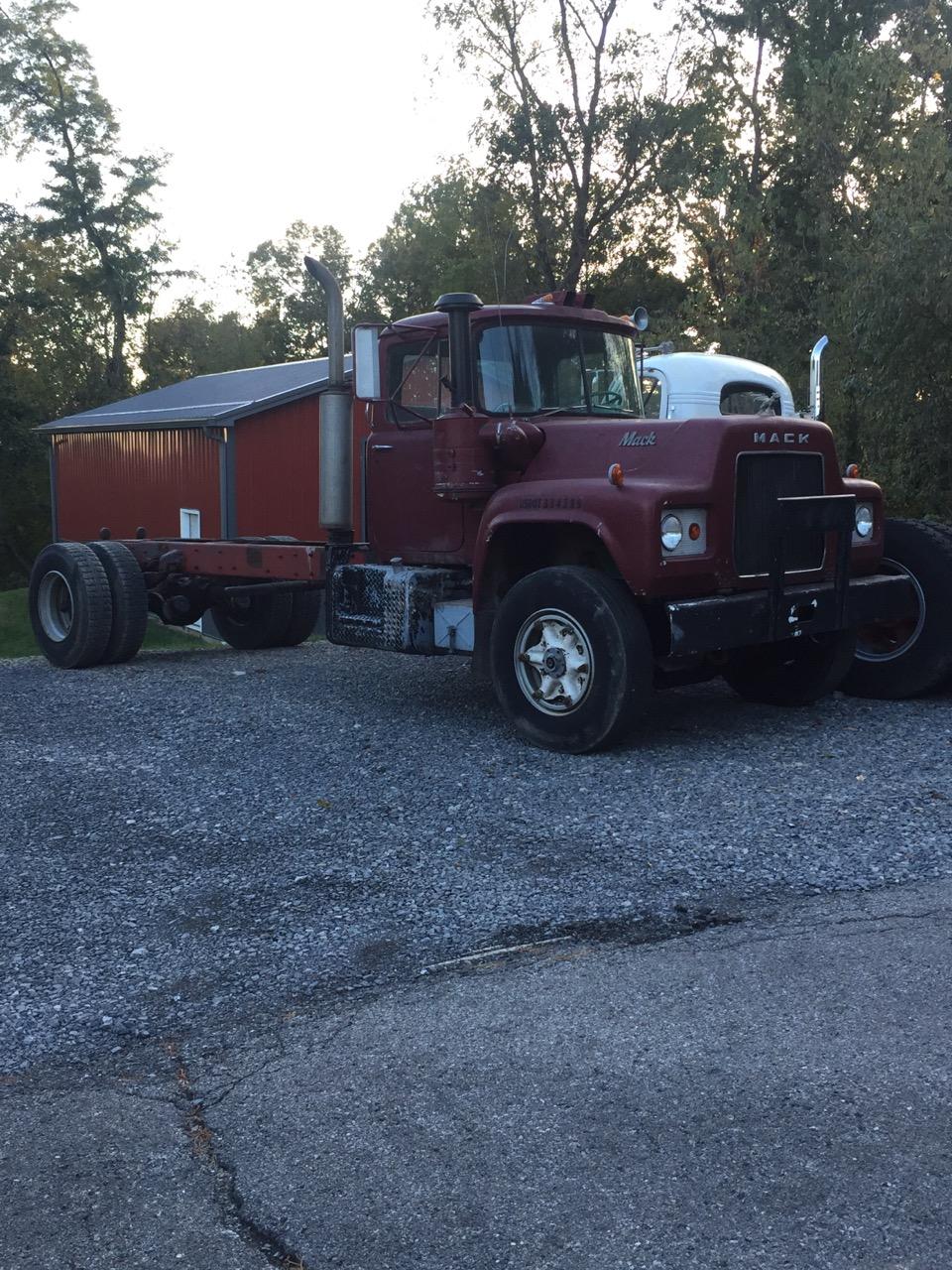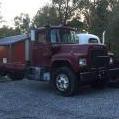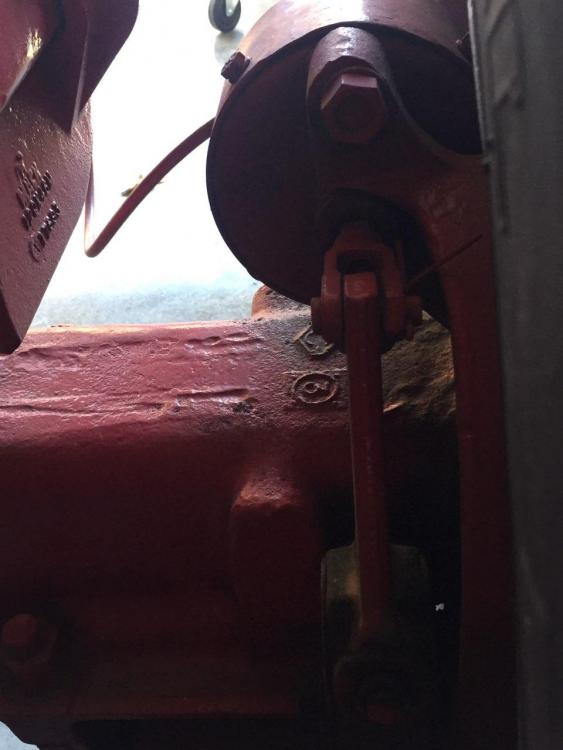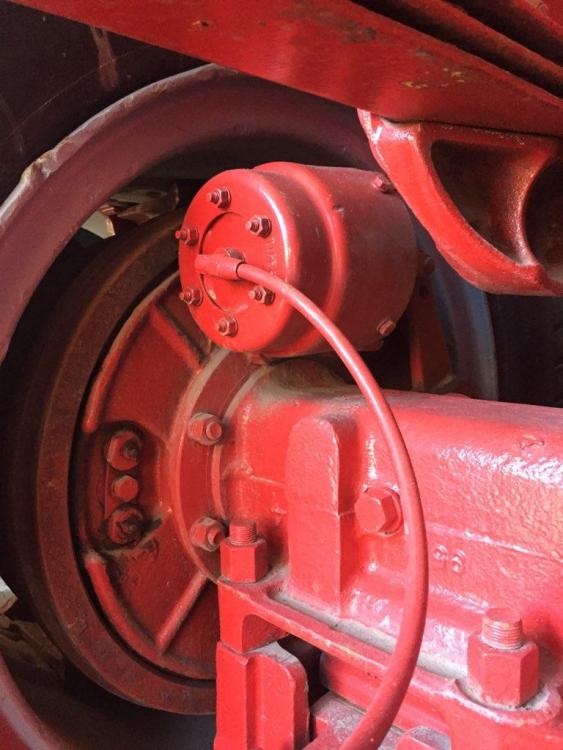-
Posts
804 -
Joined
-
Last visited
-
Days Won
3
Content Type
Profiles
Forums
Gallery
Events
Blogs
BMT Wiki
Collections
Store
Posts posted by 67RModel
-
-
20 hours ago, Licensed to kill said:
A B-61 similar looking to the one in this thread sold at auction a few months ago and went for around $32,000CAD/ Like everything, they are worth whatever someone is willing to pay
Yes. And this combination is easily worth $32,000 to somebody who wants a nice B model and realizes its going to take $30k - $40k and a year or two of their lives to build one from a $2500 pile of would be scrap metal they bought off Craigslist or Marketplace....assuming they even had the means to do a restoration. Plus you get a trailer with this one.
-
 2
2
-
-
Generally how large is the annual White bash? Is there a large turnout?
-
Figure $3,000 or $4,000 dollars for the trailer alone since it is operational and assuming it has a title. The truck has $2500 worth of tires on it plus new rims. It says new drums and brake linings. Drums for dayton hubs are outrageous these days compared to a regular budd wheel or hub pilot drums. An engine overhaul could range from a few thousand dollars for new rod and main bearings to 15 or 20 thousand dollars for a complete overhaul, and new head / machine work. I imagine overhaul parts for a thermodyne are crazy expensive if you can even find them. The bodywork and details look pretty darn nice too. Plus I just reread the ebay listing.....trailer has 8 new tires and brakes and oak deck....somebody has a good $7000 wrapped up in just the trailer alone. Not enough information on the engine overhaul to figure a price on that plus it depends on the condition of the truck before they started the restoration. Somebody has an easy 25,000 to 35,000 in todays dollars to get to what you see there (truck and trailer). When you start down this road the dollars add up exponentially....🤑
-
 2
2
-
-
9 hours ago, Joseph Moody Jr said:
You need an Pennsylvania CDL when you operate the following vehicles:
CLASS A – Applies only to “combination” vehicles with a Gross Combination Weight Rating (GCWR) more than 26,000 pounds, and the Gross Vehicle Weight Rating (GVWR) of the vehicle being towed is more than 10,000 pounds. A driver with a Class A CDL (plus any appropriate endorsements) can also operate all vehicles included in Class B, C, and D (below)
CLASS B – Includes single or combination vehicles where the GVWR of the single vehicle is more than 26,000 pounds. The vehicle being pulled must not be more than 10,000 pounds. A driver with an Pennsylvania Class B CDL (plus appropriate endorsements) can also legally operate all vehicles in Class C or D.
CLASS C – Any single vehicle, or combination of vehicles, that meets neither the definition of Group A nor that of Group B as contained in this section, but that either is designed to transport 16 or more passengers including the driver, or is used in the transportation of materials found to be hazardous for the purposes of the Hazardous Materials Transportation Act and which require the motor vehicle to be placarded under the Hazardous Materials Regulations (49 CFR part 172, subpart F).
CLASS D – Private passenger, regular operator.
This is not 100% accurate. In Pennsylvania there are Class A, B, (maybe C), and D licenses. There are also Class A CDL, class B CDL, class C CDL licenses. There is a distinction, however it is not well known. You technically need a class B license to drive a motorhome with a GVW/GVCW of greater than 26,000, however most people I would suspect do not obtain one. They just roll with their class D passenger car license. You need a CDL when you are operating any of the above classes of vehicle for ANY type of commerce including farming. The class A/B CDL license exam vs the class A/B license exam is very different and also very lenient for the regular class A/B license type. Basically you need a CDL if you are making money with the vehicle. You need a class A or B license if your vehicle / combination meets the above requirements but you are hobbyist / using for recreation. Another example of this is all the large gooseneck horse trailers you see going down the road. They all generally have a GVW of grater than 10,000 pounds so technically the people pulling them need a class A license (not class A CDL), but most do not have one. Also in Pennsylvania any tow vehicle pulling a trailer with a GVW of 10,000 or more needs to be registered in combination whether its for recreation or commerce, but most people pulling large recreation trailers never do this and the penalty for not doing so is usually a slap on the wrist.
-
Just about every R model you will find will have air brakes. There may be some R400s floating around that have hydraulic brakes but they would have to be extremely rare.
-
 1
1
-
-
- Popular Post
- Popular Post
It is a tandem axle spring type suspension that was designed and patented by Mack a very long time ago. It is still very common on vocational specd trucks and is exclusive to the Mack brand. It provides tremendous articulation and off road traction. Not the smoothest riding but certainly not the worst either. If maintained properly it is bulletproof. It has been offered in capacities from 38,000 lbs to 64,000 lbs (maybe more). It is probably the finest all around vocational suspension ever developed, which is why it is still so common after probably 75+ years. The principle has been copied or used as the basis for other similar spring suspensions such as the Volvo T Ride and Freightliner Tuff Trac suspensions.
-
 2
2
-
 1
1
-
An R300 does not exist and never did. Based on the VIN provided it would be an R600 series single axle that originally left the factory as a road tractor configuration. It would have originally had a 237hp Maxidyne given the "85" after the 6. The 6 represents the chassis class. 600 in this case. The T represents factory tractor and the 40764 indicates the number this R685 is in the production run. Given that Mack serial numbers started at 1000 (I think) this would have been the 39,764th built. If you are getting the VIN off the tag inside the drivers door you need to be careful that the door has not been changed over the years. A safer place to look is the passenger side frame rail just behind the front shock mount. The VIN number should be stamped there.
-
 1
1
-
-
2 hours ago, alex g said:
350 was a big engine. 10 or 15 speeds back then made it work. Now the young bucks with minimum 500 hp swear they need a 18 speed. I don't get it either
Back in 2017 - 2109 I set up a 1995 Volvo (White GMC) to pull pneumatic trailers to haul frac sand to the Marcellus wells. It had a 365hp 12.7 Detroit and a Eaton super 10 transmission with 3.90 rears. I always ran at 80,000 pounds or heavier since I ran at night. Most of the guys I ran with had big horsepower and 18 speeds. A few were running gliders with 550 and 600 hp caterpillars. Every shift we worked together I always managed to get the same number of loads hauled. Plus I had a tare weight of at least 3500 pounds less than them and burned a lot less fuel. For legal weight or less I'm not sure what the purpose of more than 9 or 10 gears is and more horsepower is just wasted fuel in my opinion.
-
 2
2
-
-
1 hour ago, Rob said:
There are threads on this scenario from the earlier days of the site. Basically a PP valve in the dash, (PP1, or PP7) and an R12 relay valve supplying the spring brakes equipped axle(s) along with associated air line routing. Not hard to do but you will need to space those rear chambers outward from the drive tires. I used to do this with 1/2" plate mounting to the original chamber mounts via grade 8 bolts and the new spring brake chambers mounting to the plate. You will require offset slack adjusters which are readily available. I always upped the size from the type 20 rotochambers to type 24/24 spring brake chambers myself offsetting the mountings by the distance of the slack adjuster offset. This size provided adequate stopping power for a tandem end dump truck and is physically smaller than the type 30/30 chambers. 1/2" plate was stiff enough to not bend under full brake application pressure under normal conditions. Never had problems with DOT on the matter but had heard of folks doing this with 1/4" plate and having problems.
If you have someone with a steady hand a torch does a good job or these days a plasma cutter. I made a pattern and probably still have it someplace.....
Rob,
I never realized there was offset slack adjusters available. Do you happen to have a picture of what the final result looks like with the fabricated 1/2" mounting plate? I would be interested to see what it all looks like. As far as I'm concerned the air plumbing portion of this job is the easy part. Thanks in advance.
-
I asked this same question a while back and mostly heard crickets for any type of response. I'll tell you what I have found out and learned thus far on the subject. My truck is a 1960 B81 that has S cam brakes with manual slack adjusters, much like a modern truck, however, it has rotochambers of some variety (I think type 20 or type 30) to actuate the slack adjusters. The brackets attached to the axle housing the rotochambers bolt to are extremely close to the tire/wheel assembly. The center to center measurement of the bracket hole centers are the same as any modern mounting bracket and will accept any modern brake chamber, however, the diameter of the new compound brake chambers don't allow them to be installed without interference with the wheel. Modern chambers are also much too long, causing interference with the wheel at the back of the spring chamber as well. I first tried a 30/30....not even close. I then tried a 24/24 and it fit, however, it was so close to the wheel you may have been able to fit a sheet of paper between the two. I was not comfortable with this amount of clearance. The only other option I have found but not tested yet are Haldex I Series Maxibrake chambers, specifically part number MA15770. They look to be esentially a type 20 rotochamber with a small little spring brake chamber on the back that is smaller in diameter than the service chamber so clearance should not be an issue. The only downside to these (assuming they fit as planned) is the cost. I priced two of these out a few months ago and my parts place wanted somewhere North of $400.00 apiece for them, and I could not return them if they did not work. I just could not bring myself to spend the money on them at them time with the risk of not being able to return them. I will probably bite the bullet and buy one to test and then buy a second one if it works out. I figure for a show truck that only ever bobtails one axle with spring brakes should be sufficient. Below are two pictures of my current stock setup and you can see how close the service chambers are to the wheel.
-
 1
1
-
-
I have an NTC 855 Big Cam 350 horse if you are interested. It has an eaton fuller double overdrive 13 speed still bolted to the back of it as well. They have been sitting in a warehouse for the better part of 30 years. The set came out of early to mid 80s international cabover that had 93,000 original miles. I have all the information and VIN number of the truck it came out of if you ever needed to get parts for it. I know its not an NH220 but I figured I would throw it out there. I have no use for it and need to get rid of it. I am 20 minutes from Pittsburgh.....near the airport. Thanks.
-
Release the parking brakes. Yellow air valve on the dash. If you are doing this already ("push in the brakes") then the rear brake shoes are most likely seized to the brake drums from sitting.
-
Thanks for all the info. At least I know it can be done and the correct part number. I am going to run it as is for now and see how it works out. Braking power aside, I would think they would have come standard to help get the rpms down faster when upshifting with those huge rpm drops in the t2070 and t2080 transmissions 😄. Who knows, if it ends up being a good reliable truck, and I am looking for something to do next winter in the shop maybe it will happen. Thanks again for the information.
-
 1
1
-
-
Yes full mechanical EM7-300 with the 1750 governed rpm
-
Can anybody answer the question of installing a Jake brake on this engine?
-
Yes, They are both still available. Thank You.
-
Yes it is an EM7-300
-
Hello All,
I just picked up a very mint condition 1994 RD steel body tri axle dump truck for local dirt work. I searched for a long time to find the specs I was looking for and this truck finally popped up, however the only thing it does not have is a set of Jake Brakes. It is a fully mechanical EM7 with a Mack T2070 transmission and 6.06 Mack rears on 46k Camelback suspension. Can this version of the E7 be set up with a Jake Brake? Does the slow speed 1750 governed rpm prohibit the installation of a Jake brake? I realize braking power would be less than a 2100 rpm engine, which is why I'm guessing a lot of the EM7s were never equipped with them from the start. But I have also heard that taking this engine to 2100rpm is not overrevving it. If jakes can be installed can you run this engine to 2000 - 2100 rpms on a downhill?
-
12 hours ago, AMGeneral said:
Are there titles available for either?
Unfortunately no. Bill of sale only for the blue DM. There is a title for the DM 800.
-
Yes I agree. The cabs are rough as well too. Very poor floors. I see the value in the engines, and drivelines as they both ran like sewing machines when they were finally parked. Its just a shame to see them get scrapped considering they are good running engines, transmissions, and rear ends.
-
-
I will get some more pictures today and post them up tonight.
-
 1
1
-
-
Not sure of the years but pre 1973 as they both have steel dashes. They both have 237 maxidyne engines. The blue DM600 has a 6 speed and the DM800 has what I believe to be a quadruplex. Both trucks ran very good when parked but have been sitting for several years. The DM600 has a jake brake but the DM800 does not. 6 is a triaxle and the 8 is a tandem with obviously very heavy rears. Probably 58,000 pounds or more. 12.00x24 rubber and Mack axles on camelback suspensions. Both trucks are pretty rotten and too far gone for any kind of restoration (in my opinion), however the engines, transmissions and drivelines are all good parts. They are essentially good complete parts trucks. Looking to get scrap price or maybe a little better if possible. Just trying to save them from the torch if somebody can use them. Located in the Pittsburgh, PA area. Please do not ask if I will export these or deliver them to a port. I will not deal with exporters. Thank you.
-
 2
2
-
-
What do you mean by not wanting to idle? Like starving itself for fuel to a stall, or running at higher than normal rpm at "idle"? If it truly is an all mechanical injection pump it may be the linkage. It could be out of adjustment or getting jammed up somewhere. You could disconnect the throttle linkage from the injection pump and manually open the fuel rack all the way by hand and have somebody watch your tachometer to see if it is still stopping at 1600. Just a thought.
-
 1
1
-







C -600 Model Macks
in Antique and Classic Mack Trucks General Discussion
Posted
Why do so many LTL freight trucks from the 60s, 70s, and 80s have the front bumper cut off on the ends? You only really see it on the fleet trucks from that time. Was it a weight and/or cost saving measure? It always jumps out at me and I don't know why companies did it.